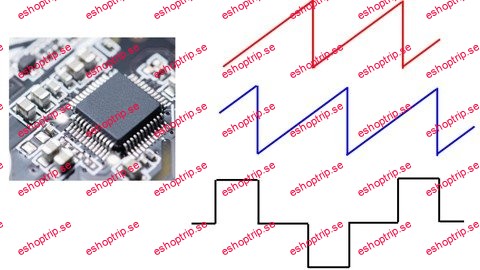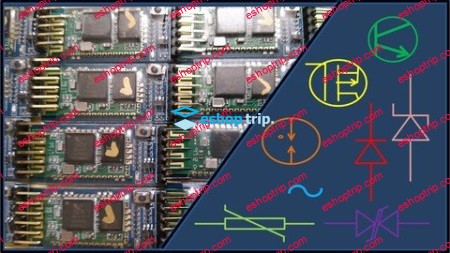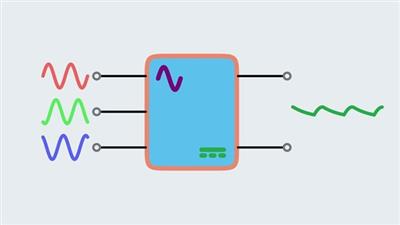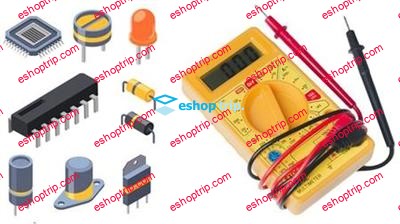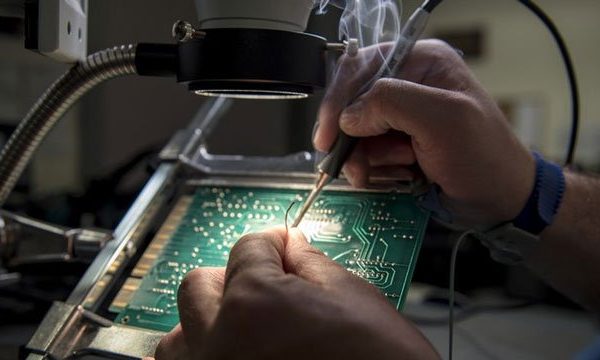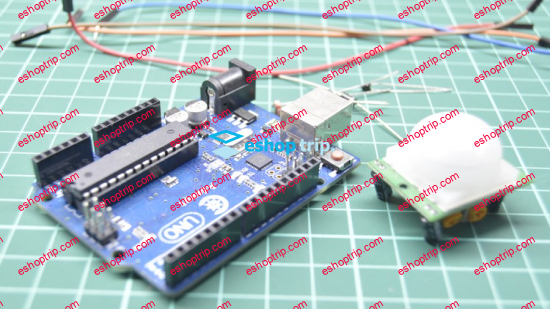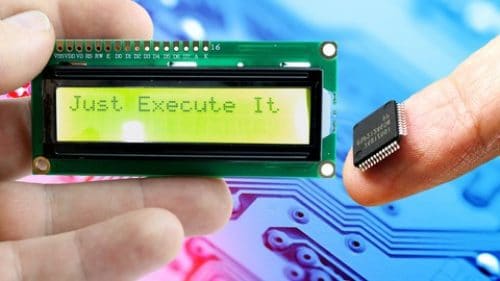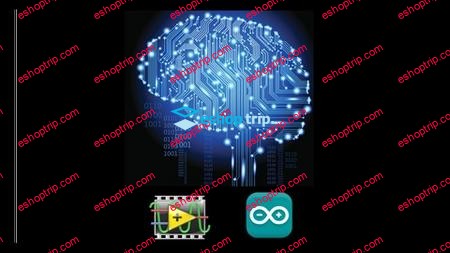Published 9/2024
MP4 | Video: h264, 1920×1080 | Audio: AAC, 44.1 KHz
Language: English | Size: 16.3 GB | Duration: 24h 39m
Using the Texas Instruments TMS320F28069 microcontroller kit
What you’ll learn
Basic features of the TI TMS320F28069 microcontroller
Installing and using Code Composer Studio IDE
Installing and using C2000Ware from TI
Basic microcontroller architecture and operation
Setting up projects and understanding compiler options and dependencies
Understanding and interpreting example projects from TI
Controlling GPIO pins
Using timers and interrupts
Using the Enhanced Pulse Width Modulation module
Receiving analog signals using the Analog to Digital Converter
Requirements
Basic C programming
TI Piccolo F28069 Microcontroller Kit – either TMDSDOCK28069 or LAUNCHXL-F28069
Oscilloscope – at least 2 channel and 10 MHz bandwidth and 50 MSample/s
Assorted resistor box – 1%, 0.25W. Mainly 2.2kOhm and 22kOhm will be used (5 of each)
Electrolytic capacitor box – 10 microFarad, 25V and 22 microFarad, 25V will be used
Assorted LEDs – red, blue and white are used in the course
Solderless breadboards for electronic circuits
Jumper cables for connection from microcontroller kit and breadboards (around 5)
Wire stripper, wire cutter
22AWG wire bundle for connections on breadboard
Description
The course will describe how to use the TMS320F28069 microcontroller from Texas Instruments for power electronics applications. The course is targeted towards beginners who are new to microcontroller programming and therefore, is ideal for electrical engineering undergraduates and graduate students who will be seeking their first job in the power industry. The course describes how a student can setup a basic home lab for the course, as this course is a hardware course and needs basic electronic equipment for hands-on experience. The course covers both theory and programming. The emphasis of the course is on creating projects and on programming the microcontroller. However, to make the material complete, the course deals with microcontroller architecture and describes the working of the processor and the peripherals.The course will begin with very simple examples such as how to make LEDs glow and flash. However, it will progress to more practical scenarios as found in power electronics applications where gating signals will be produced for practical converters. The course will also describe how the microcontroller can be used for control applications by feeding measured signals into the microcontroller and processing them. The course will use the Code Composer Studio IDE provided for free by Texas Instruments and also example projects and starter files provided through the C2000Ware package. The course will describe how necessary software can be be downloaded and how the student can interpret and understand the example projects.To be able to complete all examples in this course, the student will need to setup a home electronics lab which will cost around USD 150. Details of the components required are described in the introduction and all videos in the introduction are preview enabled.
Overview
Section 1: Introduction
Lecture 1 Welcome
Lecture 2 Target audience
Lecture 3 Course requirements
Lecture 4 Completing the course
Lecture 5 Texas Instruments
Section 2: System Setup
Lecture 6 Introduction
Lecture 7 Installing Code Composer Studio
Lecture 8 Installing C2000Ware
Lecture 9 Technical documents and guides
Lecture 10 Contents of C200Ware
Lecture 11 Details on the TMDSDOCK28069 kit
Lecture 12 Details on the LAUNCHXL-F28069 kit
Lecture 13 Testing the TMDSDOCK28069 kit
Lecture 14 Testing the LAUNCHXL-F28069M kit
Lecture 15 Tips for starting with electronics
Section 3: Getting started with microcontroller programming
Lecture 16 Introduction
Lecture 17 Microcontroller architecture and peripherals
Lecture 18 Linker files – part 1
Lecture 19 Linker files – part 2
Lecture 20 Linker files – part 3
Lecture 21 Description of Timed LED blink project files
Lecture 22 Using GPIO pins as digital outputs
Lecture 23 Configuration of GPIO pins (theory)
Lecture 24 Data types in C programming language
Lecture 25 How header files (.h) are included in the project
Lecture 26 Reading the data types used in source code
Lecture 27 Understanding the GPIO header file contents
Lecture 28 Changing the state of a GPIO pin
Lecture 29 GPIO data register structures
Lecture 30 Setting up a new Code Composer Studio project
Lecture 31 Fixing project dependencies
Lecture 32 Connecting external LEDs to GPIO pins
Lecture 33 Completing control code
Lecture 34 Executing code – TMDSDOCK28069 kit
Lecture 35 Mistake on the use of GPASET
Lecture 36 Executing code – LAUNCHXL-F28069 kit
Lecture 37 GPIO as digital inputs
Lecture 38 Conclusions
Section 4: Timers and interrupts
Lecture 39 Introduction
Lecture 40 Importance of timing in digital control
Lecture 41 Oscillators and clock signals
Lecture 42 Setting up the system clock
Lecture 43 Examining the InitSysCtrl() function
Lecture 44 Overview of CPU timers
Lecture 45 Interrupts and how they are handled
Lecture 46 PIE Vector Table
Lecture 47 Code browsing – setting up of interrupts
Lecture 48 Code browsing – PIE vector table
Lecture 49 Code browsing – initialising CPU timers
Lecture 50 Code browsing – setting up CPU timer
Lecture 51 Setting up our project and defining objectives
Lecture 52 Configuring timers using timer registers
Lecture 53 Setting different configurations for the three timers
Lecture 54 Completing project – writing ISRs and re-enabling interrupts
Lecture 55 Fixing bugs
Lecture 56 Executing code in the TMDSDOCK28069 kit
Lecture 57 Executing code in the LAUNCHXL-F28069 kit
Lecture 58 Conclusions
Section 5: Enhanced Pulse Width Modulation (ePWM)
Lecture 59 Introduction
Lecture 60 Overview of sub-modules in an ePWM module
Lecture 61 Time Base Sub-module
Lecture 62 Event Trigger and Interrupts Sub-module
Lecture 63 Code browsing – selecting an ePWM example project
Lecture 64 Code browsing – configuration of ePWM Time Base Sub-module registers
Lecture 65 Code browsing – ePWM header file
Lecture 66 Code browsing – ePWM ISRs
Lecture 67 ePWM interrupt project – setup
Lecture 68 ePWM interrupt project – initialising system and interrupts
Lecture 69 ePWM interrupt project – time base and interrupt sub-modules
Lecture 70 ePWM interrupt project – completing main configuration
Lecture 71 ePWM interrupt project – ISRs and compiling project
Lecture 72 ePWM interrupt project – executing on TMDSDOCK28069
Lecture 73 ePWM interrupt project – executing on LAUNCHXL-F28069
Lecture 74 ePWM interrupt project – triangular waveform as carrier
Lecture 75 Counter Compare Sub-module
Lecture 76 Action Qualifier Sub-module
Lecture 77 ePWM gating signal project – setup and configuration
Lecture 78 ePWM gating signal project – choosing PWM pins
Lecture 79 ePWM gating signal project – compare registers
Lecture 80 ePWM gating signal project – emulating a controller
Lecture 81 ePWM gating signal project – executing on TMDSDOCK28069
Lecture 82 ePWM gating signal project – executing on LAUNCHXL-F28069
Lecture 83 ePWM gating signal project – sine-triangle modulation for dc-ac converters
Lecture 84 Dead Band Generator Sub-module
Lecture 85 Dead band project – setup and configuration
Lecture 86 Dead band project – calculating dead time interval
Lecture 87 Dead band project – executing on TMDSDOCK28069
Lecture 88 Dead band project – executing on LAUNCHXL-F28069
Lecture 89 Synchronization feature in the TMS320F28069
Lecture 90 Phase-shift control of a full-bridge converter
Lecture 91 Phase shift project – setup and basic configuration
Lecture 92 Phase shift project – control algorithm
Lecture 93 Phase shift project – completing project setup and compiling
Lecture 94 Phase shift project – executing on TMDSDOCK28069
Lecture 95 Phase shift project – executing on LAUNCHXL-F28069
Lecture 96 Trip zone sub-module
Lecture 97 Trip zone project – setup and configuration
Lecture 98 Trip zone project – actions and ISRs
Lecture 99 Trip zone project – completing setup and compiling
Lecture 100 Trip zone project – executing on TMDSDOCK28069
Lecture 101 Trip zone project – executing on LAUNCHXL-F28069
Lecture 102 Conclusion
Section 6: Analog to Digital Converter (ADC) Module
Lecture 103 Introduction
Lecture 104 ADC module overview
Lecture 105 Start of ADC conversion
Lecture 106 ADC channel selection
Lecture 107 Process of analog to digital conversion
Lecture 108 End of conversion process
Lecture 109 Generating mock analog signals
Lecture 110 Choice of current limiting resistor
Lecture 111 ADC project – project setup
Lecture 112 ADC Project – initial starter project compilation
Lecture 113 ADC Project – analog waveforms with the TMDSDOCK28069
Lecture 114 ADC Project – analog waveforms with the LAUNCHXL-F28069
Lecture 115 ADC project – initializing the ADC module
Lecture 116 ADC project – setting up SOC trigger
Lecture 117 ADC project – choosing channels (pins) for sampling
Lecture 118 ADC project – configuring EOCs and interrupts
Lecture 119 ADC project – extracting results in ISR
Lecture 120 ADC project – second compile after setting up ADC module
Lecture 121 ADC project – reading analog values in TMDSDOCK28069
Lecture 122 ADC project – reading analog values in LAUNCHXL-F28069
Lecture 123 ADC project – calculating peak and peak-to-peak values of signals
Lecture 124 ADC project – verifying calculations on oscilloscope
Lecture 125 Conclusions
Section 7: Conclusions
Lecture 126 Conclusions
Power electronics engineers,Electrical and electronics engineering students,Graduate students,Firmware engineers and technicians
Homepage
